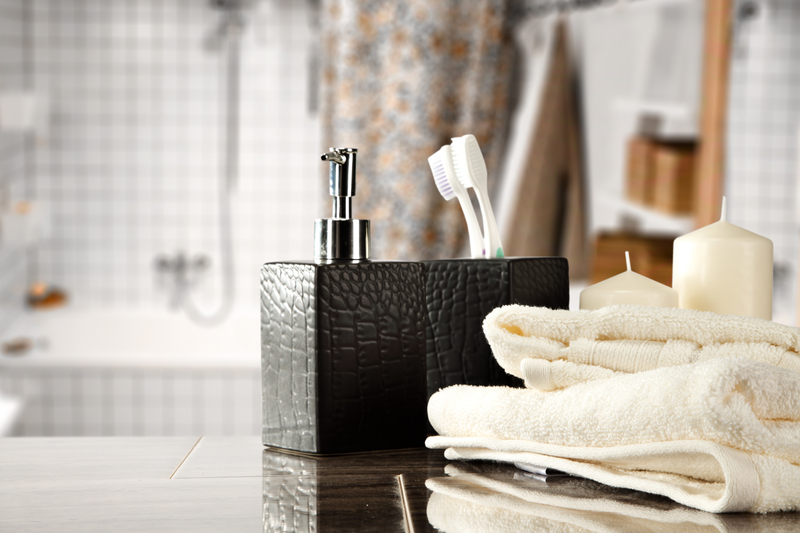The Ultimate Guide to Storing Your Unused Freezer Correctly
Posted on 01/06/2025
The Ultimate Guide to Storing Your Unused Freezer Correctly
Properly storing an unused freezer is crucial to prolong its lifespan and prevent costly repairs when you finally want to use it again. Many homeowners and businesses find themselves in situations where a freezer is temporarily out of use--whether upgrading appliances, relocating, or simply needing extra space. Whatever the reason, it's essential to understand the best practices for freezer storage and care to avoid problems like mold, odors, rust, or mechanical failure.
Why Is Proper Storage of an Unused Freezer Important?
An unused freezer can easily become neglected, leading to avoidable issues that might ruin the appliance for good. Here's why you should store your freezer correctly:
- Prevents mold and mildew: Improper storage often leads to moisture buildup, resulting in mold growth.
- Prevents foul odors: Old food or moisture can cause persistent bad smells inside the freezer.
- Protects mechanical components: Ensures critical parts don't corrode or get damaged.
- Prolongs appliance life: Minimizes wear and tear from environmental exposure or incorrect placement.
- Keeps pests out: Rodents and insects are less likely to find an unused freezer attractive if stored properly.
By following the steps in this ultimate freezer storage guide, you'll save yourself time, money, and frustration when it comes time to put your freezer back to use.

Steps to Prepare Your Freezer for Storage
Getting your freezer ready for a storage period--whether weeks, months, or longer--requires a thorough approach. Here's a comprehensive checklist to ensure your unused freezer stays in top condition:
1. Defrost and Clean Thoroughly
- Remove all contents: Take out every item, including removable shelves, baskets, and drawers.
-
Unplug the freezer and allow it to defrost.
- To speed up defrosting, you can place a pot of hot water inside and keep the door closed.
- Place towels around the base to absorb any melting ice.
- Wipe down every surface with a mixture of baking soda and warm water. This neutralizes odors and removes any leftover residue.
- Clean hard-to-reach areas: Use a soft brush or a toothbrush for corners, crevices, seals, and hinges.
_Caution_: Never use harsh chemicals or abrasive pads, as these can damage the internal lining and seals.
2. Dry Completely
- Ensure every part is 100% dry before storage. Residual moisture is the main cause of mold and mildew development.
- Leave the door open for several hours--or overnight--for thorough air-drying. You can use an absorbent cloth to speed things up.
3. Store Door Gaskets and Seals Properly
- Gaskets (the rubber seals around the door) should be cleaned and dried meticulously.
- Apply a thin layer of petroleum jelly or specialist freezer gasket lubricant to prevent them from cracking during the storage period.
4. Neutralize Odors
- Place an open box of baking soda or a purpose-made odor absorber inside the freezer.
- If you prefer, use charcoal briquettes (unenhanced) to absorb lingering smells.
5. Secure Cords and Remove Accessories
- Tie up the power cord neatly and secure it with a cable tie. Tape it to the back of the freezer to prevent tripping or tangling.
- Pack removable shelves, drawers, and baskets separately if possible--to prevent damage during movement or storage.
Where Should You Store an Unused Freezer?
Where you store your unused freezer is as important as how you prepare it. The right location protects your appliance from damage due to temperature swings, moisture, and pests.
Indoor Storage (Preferred Option)
- Climate-controlled storage units or a dry basement/garage (with temperature control) are ideal as they prevent rust, condensation, and electronic failures.
- Make sure your chosen space is well-ventilated and protected from leaks, floods, or pests.
- Raise the freezer off the ground using a pallet or blocks if possible, which protects against minor flooding and encourages air circulation.
Outdoor Storage (If Necessary)
- Sometimes outdoor storage is the only option. In this case:
- Cover the freezer with a breathable tarp--never use plastic sheeting that traps moisture inside.
- Ensure the area is shaded to avoid direct sunlight, which can warp plastics and damage finishes.
- Avoid leaving the freezer exposed to the elements. Place it under an awning or in a shed whenever possible.
Tip: Never store your unplugged freezer in a humid area, as the risk of mold and corrosion skyrockets.
How to Store an Unused Freezer Upright vs. Lying Down
The orientation of your freezer during storage is another critical factor. Here's what you need to know:
- Upright: Always preferred, as it prevents compressor oil from moving into areas it shouldn't be.
- On its side/back: If you absolutely must store it lying down, let it stand upright for several hours (usually 12-24 hours) before plugging it back in. This allows the compressor oil to return to its proper place and prevents damage.
To recap: Storing your freezer upright is the safest choice whenever possible.
Should You Leave the Freezer Door Open During Storage?
This is a common point of confusion. Should the freezer door be left open, closed, or slightly ajar?
- Never keep the door tightly sealed. This invites mold and odorous buildup inside the appliance.
- Slightly prop the door open using a folded towel, wedge, or a purpose-designed door stop to allow ongoing air circulation.
- Don't open the door wide, as this encourages dust and insects to make their way inside.
Securing the door slightly open is the best practice for long-term freezer storage.
How to Protect an Unused Freezer from Pests
Even a clean freezer can attract unwanted guests like mice, insects, or spiders if not properly protected.
- Seal any cracks or holes in the storage area to prevent entry.
- Use pest deterrent sachets (like cedar, peppermint, or commercial repellents) nearby, but never inside the freezer.
- Check regularly for any signs of droppings or chew marks during the storage period.
Checklist for Short-Term vs. Long-Term Freezer Storage
Short-Term Storage (Less Than 3 Months)
- Follow the basic preparation steps above (clean, dry, door ajar).
- Keep the freezer in a cool, dry location out of direct sunlight.
- Monitor for humidity and pests every few weeks.
Long-Term Storage (3 Months or More)
- Reapply gasket lubricant every few months if possible.
- Consider removing and storing the door separately if manufacturer guidelines permit.
- Regularly check the interior for signs of mold or mildew, and replace odor absorbers as needed.
- If storing outdoors, inspect tarp and coverings for leaks and adjust as necessary.
Restarting Your Freezer After Storage: Key Steps
When it's time to use your stored freezer again, you'll want to ensure it's safe and fully operational.
1. Visual Inspection
- Check the appliance for rust, mold, noticeable odors, or leaks.
- Look for any evidence of pests or chewed cables.
2. Let It Sit Upright
- If you moved or stored the freezer on its side, keep it upright for at least 12 hours so compressor oil settles correctly.
3. Clean Again If Needed
- Wipe down the interior and re-clean any dusty areas or musty spots.
- Replace odor absorbers and ensure the plug and cord are intact and dry.
4. Run an Empty Cycle
- Plug in and run the freezer empty for 24 hours to check for cooling performance and odors.
5. Load Contents Safely
- Only replace food and supplies once you're confident the freezer is running as expected and smells fresh (no musty or foul odors should remain).
Common Mistakes to Avoid When Storing an Unused Freezer
- Leaving food inside: No matter how short the period, always empty the freezer completely.
- Neglecting to clean properly: Even a small amount of residue can cause bacteria, mold, and odors.
- Forgetting to dry thoroughly: Moisture is the number one cause of problems during freezer storage.
- Sealing the door air-tight: This traps humidity and fosters microbial growth.
- Incorrect orientation during storage: Always store upright if at all possible, and allow time for the compressor oil to settle after movement.
- Choosing the wrong location: Avoid damp, humid, and unprotected outdoor areas.
Frequently Asked Questions About Storing Freezers
Can I Store My Freezer Plugged In But Empty?
While it's technically possible, running a freezer empty long term wastes electricity and can cause unnecessary wear on components. It is better to unplug, clean, and store your unused freezer as described in this guide.
Is It Okay to Store My Freezer in a Shed or Garage?
Yes, but only if the area is dry and well-ventilated. Avoid unheated, non-insulated spaces in areas with high humidity or dramatic temperature swings, as these accelerate rust and mechanical issues.
How Do I Prevent Musty Smells in My Freezer During Storage?
- Thorough cleaning before storage
- Ensuring it's 100% dry
- Using odor absorbers (baking soda or charcoal)
- Propping the door slightly open
Can Mold Grow in an Unused Freezer?
Absolutely. If the interior is not completely dry or if the door is tightly closed, mold and mildew can develop surprisingly quickly.

Best Practices for Storing Your Unused Freezer
- Clean and dry thoroughly before storage.
- Store with the door slightly ajar to prevent odors and mold.
- Keep in a cool, dry, and well-ventilated area.
- Store upright whenever possible.
- Protect seals with a small amount of petroleum jelly.
- Check periodically during long-term storage.
Conclusion: Get the Most from Your Unused Freezer
Following this ultimate guide to storing unused freezers will ensure your appliance stays functional, fresh-smelling, and ready for service whenever you need it. Remember: Preparation is everything. A small investment of time and attention now can save you from major headaches down the road.
Whether you're storing your chest freezer, upright freezer, or portable ice box for a few weeks or a few years, the right steps make all the difference. Use this comprehensive guide whenever you need to store your freezer--your future self will thank you!





